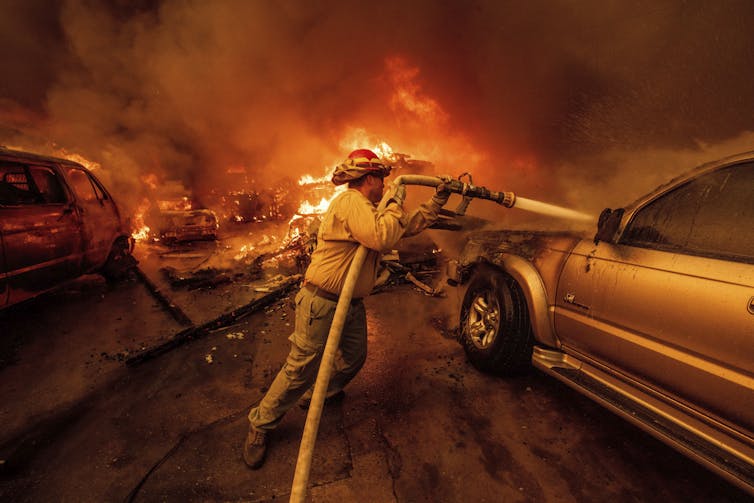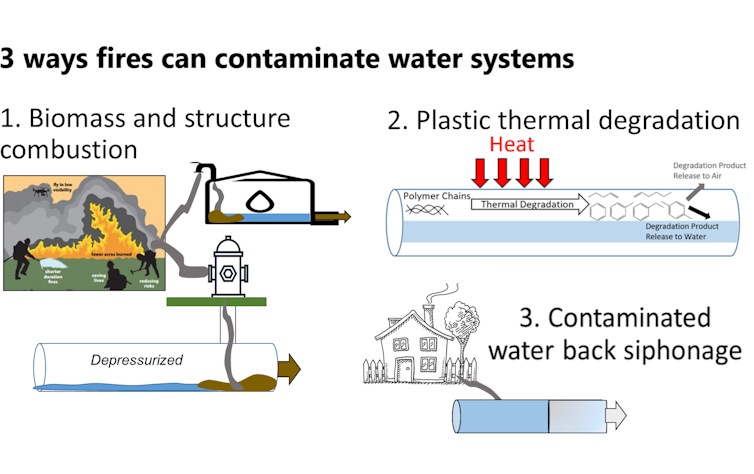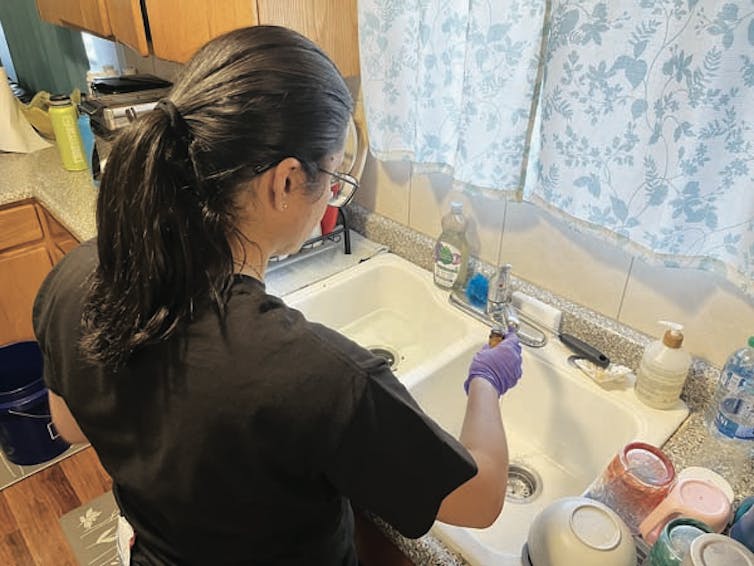Wildfires in the Los Angeles area have destroyed thousands of structures, many of them homes, and firefighters are still battling the blaze. Parts of Pacific Palisades, Altadena, Pasadena and other California communities are now unrecognizable.
As evacuation orders are lifted, safe drinking water should be a top priority for those residents who are able to return to their homes.
Many people do not realize the extent to which their community drinking water systems can be damaged by fire, how their water can be affected and what they can do about it.
As an environmental engineer, I work with communities affected by wildfires and other disasters. Over the years, my team and I have been called upon to help after some of the most destructive wildfires in U.S. history. In some cases, we provide advice to state and local officials from afar.
Several local water systems in the Los Angeles area have begun issuing warnings against potentially unsafe drinking water. Here's what residents in the area and anyone else living near where wildfires are burning need to know.
How fire makes water unsafe
Fires can make drinking water, as well as the pipes and tanks themselves, unsafe. There are many reasons why this might be the case.
One reason is high firefighting water consumption, which causes water systems to drain.

Water systems are not designed to fight wildfires. Damaged and destroyed structures can also lead to uncontrolled water leaks. Loss of power can also prevent water from replenishing the drainage system quickly enough. These factors combine to depressurize the water system, leaving no water available.
When water is depleted, the system is susceptible to chemical contamination.
Drinking water contamination can also result from damage to air and water system infrastructure. The heat can partially melt plastic pipes and water meters, releasing chemicals; smoke can be sucked into water systems; and damage to water infrastructure can cause contamination.

Many cancer-causing chemicals have been found in water systems damaged after wildfires. Sometimes these chemicals, such as benzene, can cause immediate illness if you drink or use the water. Symptoms may include nausea, headache, and rash.
These chemicals stick to infrastructure surfaces and can even penetrate some plastic pipes and gaskets. It can take anywhere from a few days to a few months to remove them. Some plastics can absorb chemicals like a sponge and slowly release them into clean drinking water, making the water unsafe for an extended period of time.

How communities can reduce risk
Residents and businesses should pay attention to advisories from drinking water suppliers and health officials regarding water safety.
Safety can be determined through appropriate chemical testing. Fortunately, the first-ever guidance on how water systems respond to and recover from fires has been published in 2024. Homeowners can find more information from groups like our Purdue University research team.
When to test and treat your own water
Caution is required when testing household drinking water.
After the 2023 Maui wildfires in Hawaii and the 2018 Camp Fire in Paradise, California, I met many families who spent hundreds to thousands of dollars hiring companies to do their own water testing. However, many results turned out to be insignificant. In some cases:
- Residents were charged for water analysis despite improper sample handling.
- Potentially contaminated water was poured from the pipes before samples were collected.
- Water samples were not properly screened for fire-related chemicals.
- Samples were not collected from the correct or adequate location in the home.
Treatment of the water is not recommended until the extent of the contamination is known. Water systems in the area have issued such warnings.

Residents should also be aware that home water treatment equipment is not certified to make extremely contaminated water safe.
To help property owners make the best decisions, water companies need to quickly test and share with the public what chemicals are present in their water systems. Once testing has been completed and the risks are understood, owners may wish to commission their own testing if pipes are damaged or contaminated water flows in.
Water systems can be restored
Waiting for information can be frustrating, but it is often unsafe for water officials to enter affected areas immediately after a fire to begin testing.
As history shows, safe water can be restored. Help from experts who have helped others respond can speed recovery. In my experience, communities that work together and support each other recover quickly and emerge stronger.